The Icelandic horse breed is one of the smallest horse breeds that originated in Iceland’s harsh environment. The horse’s size is like a pony but considered a horse due to behavior and characteristics like a horse. The horse displayed additional two gaits than ordinary horse breeds. The Icelandic horse is distributed throughout Europe, America, and many parts of the world. The horse is still used for traditional sheepherding in Iceland and pleasure riding, racing, and showjumping.
Important Information on Icelandic Horse
The horse is one of the most important animals on the Island of Iceland. It believes that if the horse were not there, the Vikings and Icelandic people would survive in the land. The horse has been pure for thousands of years. No other breed of horses in the world can claim as pure as this breed. In Iceland, horse breeding and rearing are considered as art and passion.
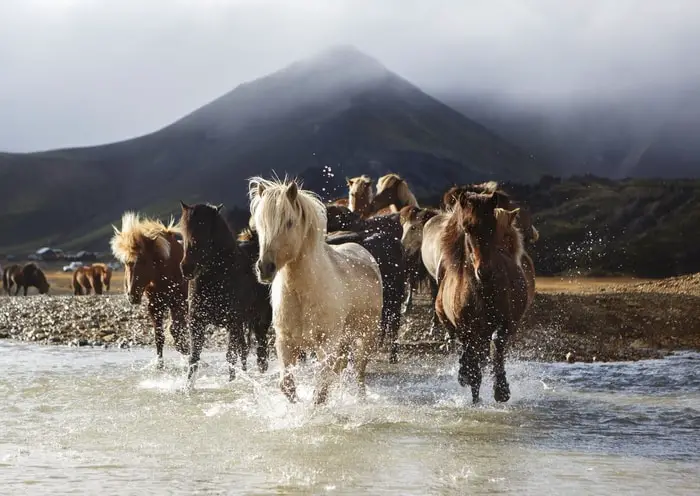
1. History and Development
The Icelandic horse history traced back to the 9th century during the settlement of people on this Island. Vikings first brought the horse from various sources in Iceland. The origin of this breed from Scandinavian and North European horse breed Equus Scandinavicus. Other sources claim that development of the Icelandic horse from an English Exmoor Pony. Iceland was isolated, and the breed remains pure for the last thousand years.
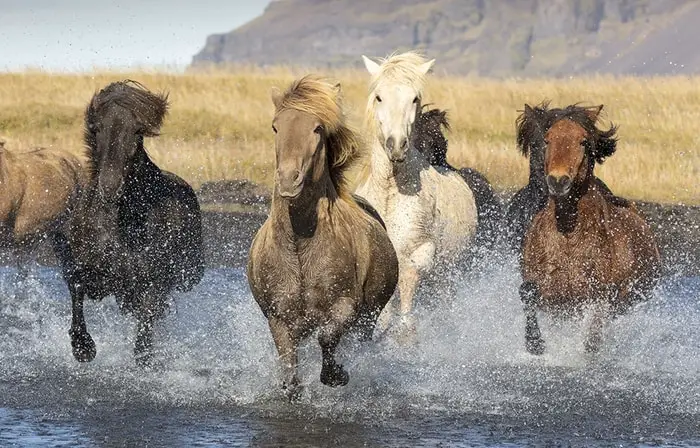
The horse came to its present condition by selective breeding years after years. The Connemara pony, Highland pony, and Shetland pony were crossed with this breed earlier. Genetic analysis found similarities with Mongolian horses. Mongolian horse was imported from Russia by Swedish traders and affected the Connemara pony, Fjord horse, Scottish Highland pony, Shetland, and Exmoor pony.
2. Physical Characteristics
The Icelandic horse is generally small and hardy. The head is the well-proportionate, straight, and broad forehead. The neck is short, muscular, and the base is broad. The chest is deep; the shoulder is firm, the wither is broad and low, croup is muscular, short, and slopping. The mane and tail are full of coarse hairs. The body is covered with double coated hairs to protect from extreme cold.
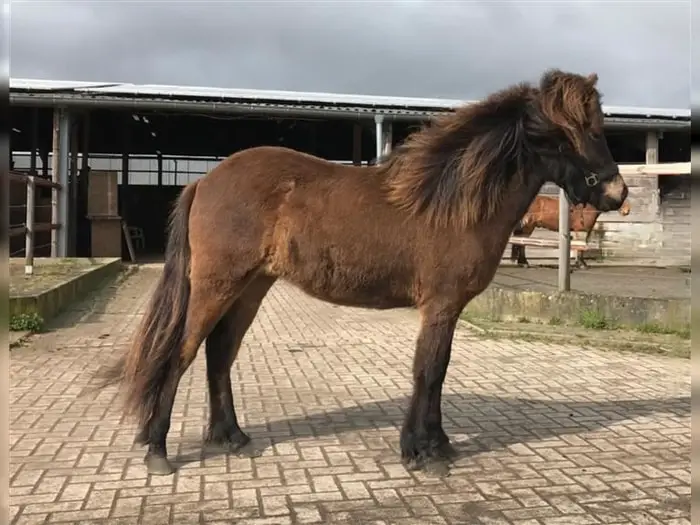
3. Height and Weight
The horse is a relatively shorter horse breed and looks like a pony. The average height of the horse is 13-14 hands (52 to 56 inches). The body-weight of the species ranges from 330 to 380 kgs (700-800 pounds). Icelandic’s size is like a pony but considered a horse by the breeders and registers due to horse-like behavior.
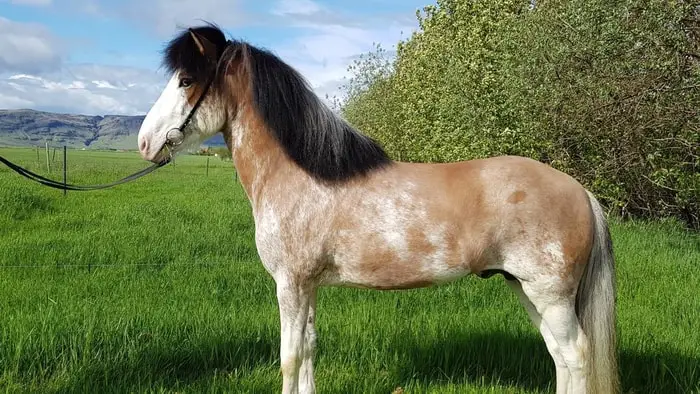
4. Color and Markings
The Icelandic horses are found in many coat colors, including bay, chestnut, black, grey, brown, palomino, pinto, and roan. The horse can be found in 40 different colors, and there are more than 100 names of color variations.
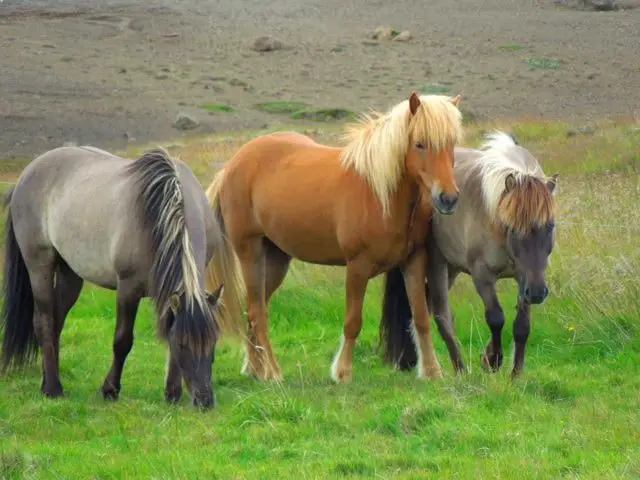
5. Behavior and Temperament
The horse is docile, friendly, and easy to handle as they are smaller in size. The horse can be trained easily, well-spooked, intelligent, and well-behaved. The horse is ideal for kids and beginners. They are hardy, less intake of feed, and can sustain in starvation.
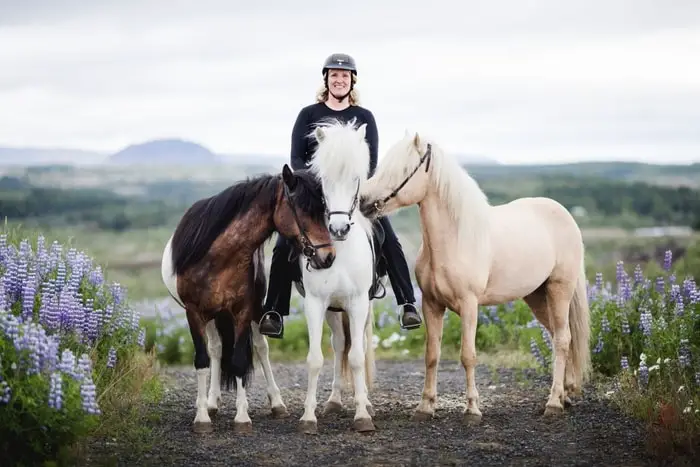
6. Diet and Nutrition
The horse requires less feed than other ordinary horse breeds. The breed was developed in Iceland’s harsh and cold climate and can sustain a more extended period of starvation. The usual feed like grains, corns, burley, green grass, and hay. You can give vitamin and mineral supplements with concentrated ration. They can sustain in a cold climate without feed and water for a more extended period.
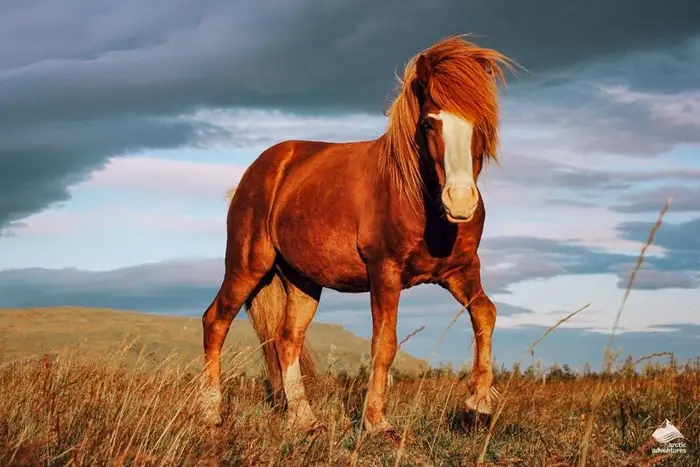
7. Care and Management
Icelandic horses require less care and management than many other horse breeds. They need less space in the stable; they can sustain in extreme cold with less heat support. They require daily grooming and periodically clipping of hairs. In the summer, you can bathe your horse fortnightly. You can provide beddings in winter. Daily grooming makes the horse shiny and smart.
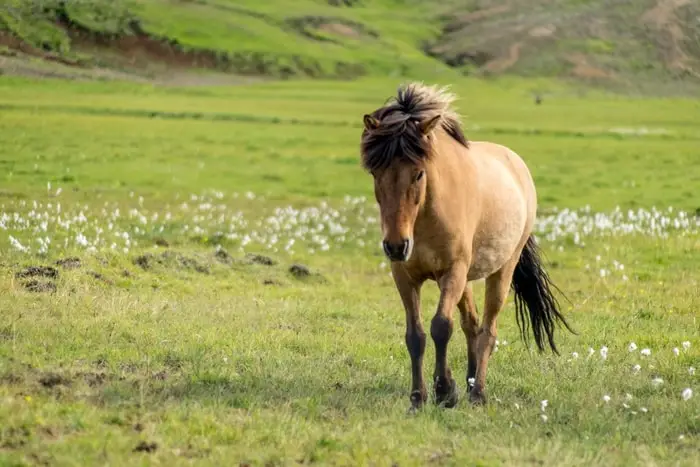
8. Health Issues of Icelandic Horse
The is generally healthy and fit for extreme environment. Iceland Island is isolated geographically, and the horse is virtually free from many horse diseases. To keep the horse pure and disease-free World Equestrian Championship was never arranged in Iceland. You need to deworm and vaccinate your horse regularly. If the horses graze the pasture, you can treat the field with potential broad-spectrum insect killers.
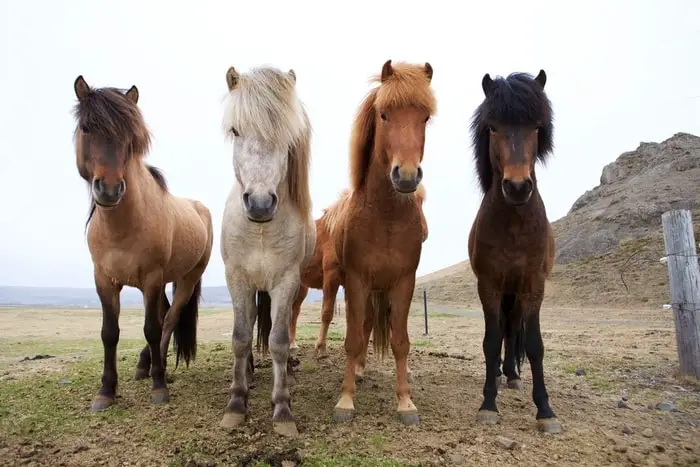
9. Gait of Icelandic Horse
Icelandic horses have two additional gaits, and they are well-known as “Five-gaited” horses. They are sure-footed and can cross the rough terrain easily. The standard four gaits of a horse are walk, trot, canter, and gallop is present in the horse. The slight changes in the footfall pattern, the breed registers considered canter and gallop as one gait.
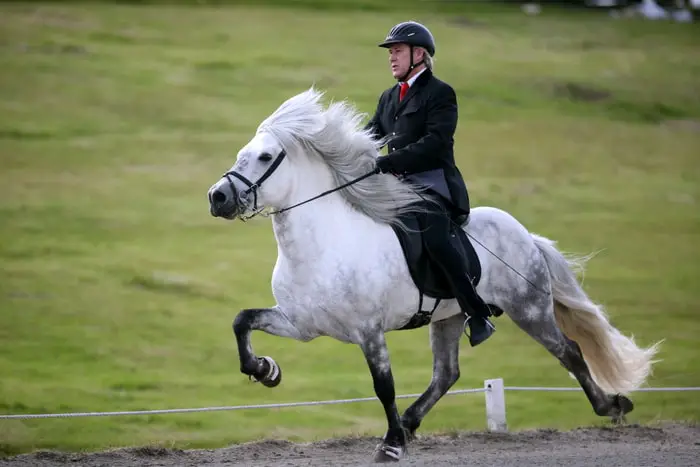
The four-beat lateral ambling gait known as “tölt” is the first additional gait of the horse. The advantage of the pace is the explosive acceleration of speed, comfort, and ground covering. The gait is similar to largo in the Paso Fino horse, rack in the Saddlebred, and running walk in the Tennessee Walker horse.
The second additional gait of the horse is pace called “flying pace” or skeið, flugskeið. The gait’s advantage is in the race, and the horse can run at excessive speed up to 30 miles/hour or 48 km/hour. All Icelandic horses do not exhibit this gait. The horse that exhibits both tölt and flying pace is the best of all horses.
10. Registration and Distribution
International Federation of Icelandic Horse Association (FEIF) is the governing body for registration and maintaining a horse’s studbook. The FEIF was established on 25 May 1969 with six founding member countries. At present, the number of members of FEIF is 19, and more than 300,000 horses are registered in this association. Germany is the country having the second-highest number of horses after Iceland.
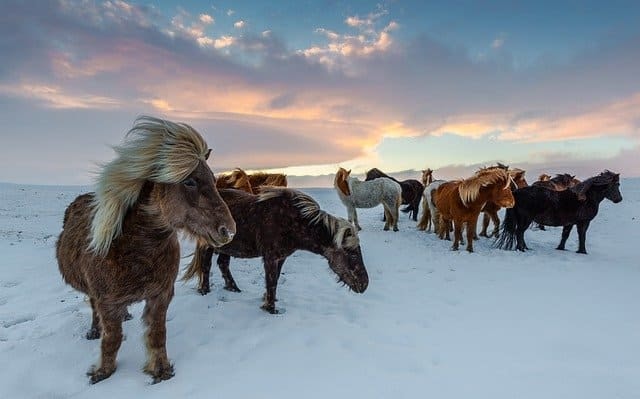
The horse is distributed mainly in Europe and North America. A small number of horses are found in New Zealand. More than 80,000 horses are present in Iceland, with a total population of 2,70,00. More than 100,000 horses are found outside Iceland and mostly in Europe.
11. Mythology About Icelandic Horse
The horse played a significant role in Norse Mythology. The Norse people considered the horse a symbol of fertility, and they sacrifice white horses in ceremonies and feasts. When the Norse people started the Iceland settlement, they brought the horse and their belief in this Island. The horses play a prominent role in the Icelandic saga, like Njal’s saga, Grettir’s saga, and Hrafnkle’s saga. The modern horses club in Iceland bears the name and fame of ancient traditions of the horses and the mythology.
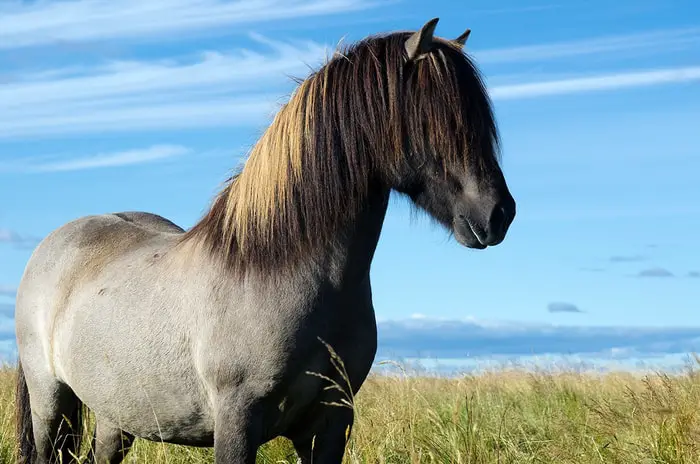
12. Versatile Uses of the Horse
The horse is a versatile horse breed and used in occasions and events. The versatile uses of the breed are as follows:
- The horse played a vital role in the life and economy of Iceland despite the development of roads.
- The horse is widely used in agriculture and household purposes.
- The traditional Icelandic race is arranged every year with the horse.
- Both pace and gallop races are arranged with unique showcasing.
- In winter, horse racing is arranged over the frozen water bodies.
- The agricultural society arranges horse show every year with different varieties.
- The horse is famous for sheepherding in Iceland.
- The horse is also used as horse meat in many countries.
- The people visited Iceland rides on the horse and watched the natural beauty of the Island.
- A horse riding tour is one of the most attractive events to foreign visitors in Iceland.
Concluding Remarks on Icelandic Horse
The Icelandic horse is the most popular breed on the Island. The versatile horse helps the Icelandic people to survive and strive on this harsh island. The horse is unique and popular with foreign visitors. In my article, I have tried to highlight all possible information for you. As a horse lover, you will be benefitted from the article.
